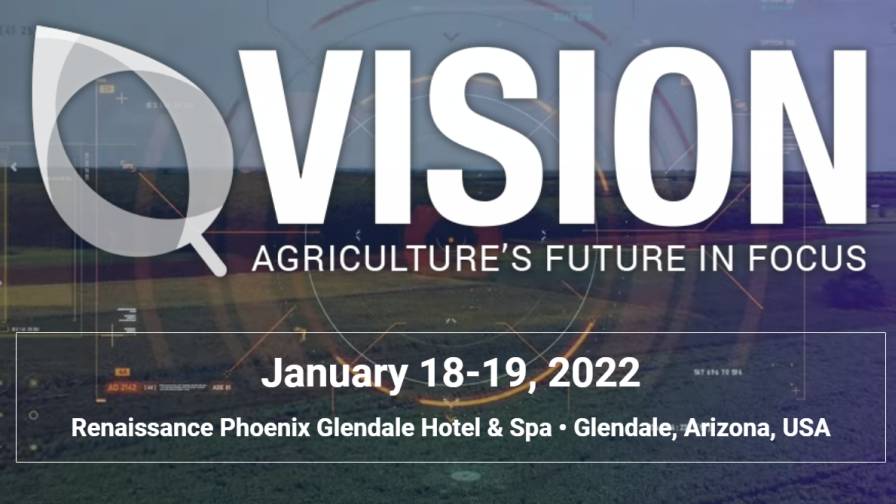Will Digital Ag, Agtech and a Soil Health Focus Spark a New Farming Era?
 Editor’s note: The VISION Conference 2022 will feature expanded exploration of where innovation is rapidly driving change, including trends in high-value specialty crops, sustainability and carbon sequestration programs, and high-tech controlled environment production systems. One emerging topic on the agenda is soil health. Below is an inside look at how we are at the cusp of a tech-enabled, soil-focused, crop diversity reset of America’s agricultural heartland.
Editor’s note: The VISION Conference 2022 will feature expanded exploration of where innovation is rapidly driving change, including trends in high-value specialty crops, sustainability and carbon sequestration programs, and high-tech controlled environment production systems. One emerging topic on the agenda is soil health. Below is an inside look at how we are at the cusp of a tech-enabled, soil-focused, crop diversity reset of America’s agricultural heartland.
Last year, the tenant farmer at Gunzenhauser Farms planted our land into soybeans.
He had a rough spring and ended up having to replant, so it turned out to be a pretty short production season with his spring troubles. Our land was growing crops from just June until October — five months out of the year. For the next seven months it sat, waiting for this year’s farming season to begin.
That short season got me thinking: if we consider our croplands as “solar collectors” turning sunlight into food, why are we only converting sun into food for a portion of the year? That’s a gift given to us, so why aren’t we using it?
Of course, we all know why — our current agricultural model is built upon the efficiencies-of-scale model, so it doesn’t encourage a diversity of practices. Farming a mix of crops and livestock was something our grandfathers and great-grandfathers did as second nature. But those practices disappeared along with the loss of regional food systems and as local slaughterhouses and were replaced by global commodity markets, 120-foot wide planters and 500-hp tractors.
But things are changing in agriculture. We are experiencing the beginnings of a paradigm shift in our food production systems.
Agtech is giving us tools to farm in different ways. Digital tools, combined with our new understanding of soil biology and the ecological impacts of agricultural practices, can quantify, measure and benchmark new approaches, telling us precisely what works and what doesn’t (and how much it will cost). Consumers are pressuring the marketplace into taking a closer look at what comprises ecological farming practices.
Thinking about where we are today, I wonder what it must have been like farming before and after Norman Borlaug and his groundbreaking work hybridizing dwarf wheat varieties. Borlaug’s work sparked the “Green Revolution” that turned into industrial agriculture as we know it.
Right now, we are at the cusp of a tech-enabled, soil-focused, crop diversity reset of America’s agricultural heartland. Maybe we’ll call it the SoilTech Revolution.
Smart Farm Tech is Changing Everything
Here in Iowa, famous for our bitterly cold and dry winter weather, if we want to farm through the winter months, the only logistical way is by incorporating livestock. But fencing went away years ago and is generally not compatible with large-acreage crop rotations.
Enter the new, intriguing world of “fenceless fence” tech and companies like eShepherd that are developing “smart fencing” systems for livestock. This tech creates virtual fences that trigger a noise when the livestock approach the barrier. Animals are trained to the alert, letting farmers move herds around a field using a “virtual” fence.
Pastureland in the Midwest has been converted to cropland for economics. Crops are more profitable per acre than livestock. But what if we inter-seeded the corn planting with rye or wheat and when corn harvest was finished, we ran cattle through the stubble and emerging rye using a virtual fencing program? A farmer could add a secondary revenue stream from the same land while improving their soil health. This would be a diversity win-win with extra revenue to boot.
Or, consider the experiments of Iowa farmer and Granular CSA (Certified Services Agent) Zach Smith, who created an in-crop grazing system. He calls his plan “stock cropping,” moving sheep, goats, pigs, and chickens through cornfields interplanted with grazing strips. Smith estimates an 80-acre field planted into a primary crop like corn could also raise 200 sheep, 200 goats, 450, pigs and 9,000 chickens in a season!
These are the things I think about when I put on my farmer’s hat and look at the future of my family farm holistically. As new tech becomes available (and affordable), does it make sense to rethink our current agricultural model? Can we use the same land to produce more to harvest and grow the farmer’s bank account at the same time?
Using Data to Move Beyond Precision Grain Systems
For the second part of rethinking the “SoilTech” holistic farm of the future, I switch to my “agronomy science” hat. Data analysis and the digitizing of the soil microbiome create new insight into the complex interactions that happen underground and the effects of different farming practices on soil health.
To date, the big push with data in agriculture has focused on precision grain systems. The same big data techniques we use to figure out the perfect precision planting seeding rate for each field (and section of the field) are now being applied to understanding soil biology. Plus, now we can run a DNA sequence of our soil and catalog its microbiome.
This is launching soil science into an era where quantifying and verifying the effects of different farming practices on our soil is a reachable goal. Once we have enough data in the system, we can then model new ideas before implementing them. All this means better-informed decisions, shaking up the metrics of what success looks like. Our great-grandfathers based their choices on their observational skills — the wheat crop the season after the cows had run through the field was healthier and produced more — but it was still hard to quantify what it was that had worked and then replicate it.
Digital ag has the power to provide those answers, which means less risk-taking for the farmer. We can analyze the pros and cons of diversifying our farm practices before we invest in doing so.
Where to From Here?
Of course, many pieces of the food system puzzle need to fall in place to support greater farm diversification before pie-in-the-sky ideas become a reality.
The availability of regionally located markets and slaughter facilities, for instance, is a major stumbling block. Smith freely admits that his “stock-cropping” system would require dedicated labor for livestock management and marketing (although that also equals more jobs in our struggling rural economies). And while we like to reminisce nostalgically about farming practices of the past, just because our great-grandfathers were more diversified in their production doesn’t mean everything they did was better for the land or the environment as compared to how we farm today.
However, I still am bullish on our future farms supporting more diversified production, even in the heartland. The further we move down the “big data” and “agtech” path, the more chances farmers will have to step back, rethink, and reconsider their practices and crop mix. If there are enough farmers “stock cropping” their fields, maybe there are enough to cooperatively invest in a new regional slaughter facility, for instance. Farmers are nothing if not resourceful when they see an opportunity!
We’ve been driving things a certain way in agriculture for a while now. But ingenuity has always been transformative in farming. Just because it has “always been done that way” is not a reason to say we can’t turn the wheel and chart a new direction that makes sense for the future of our farms.










